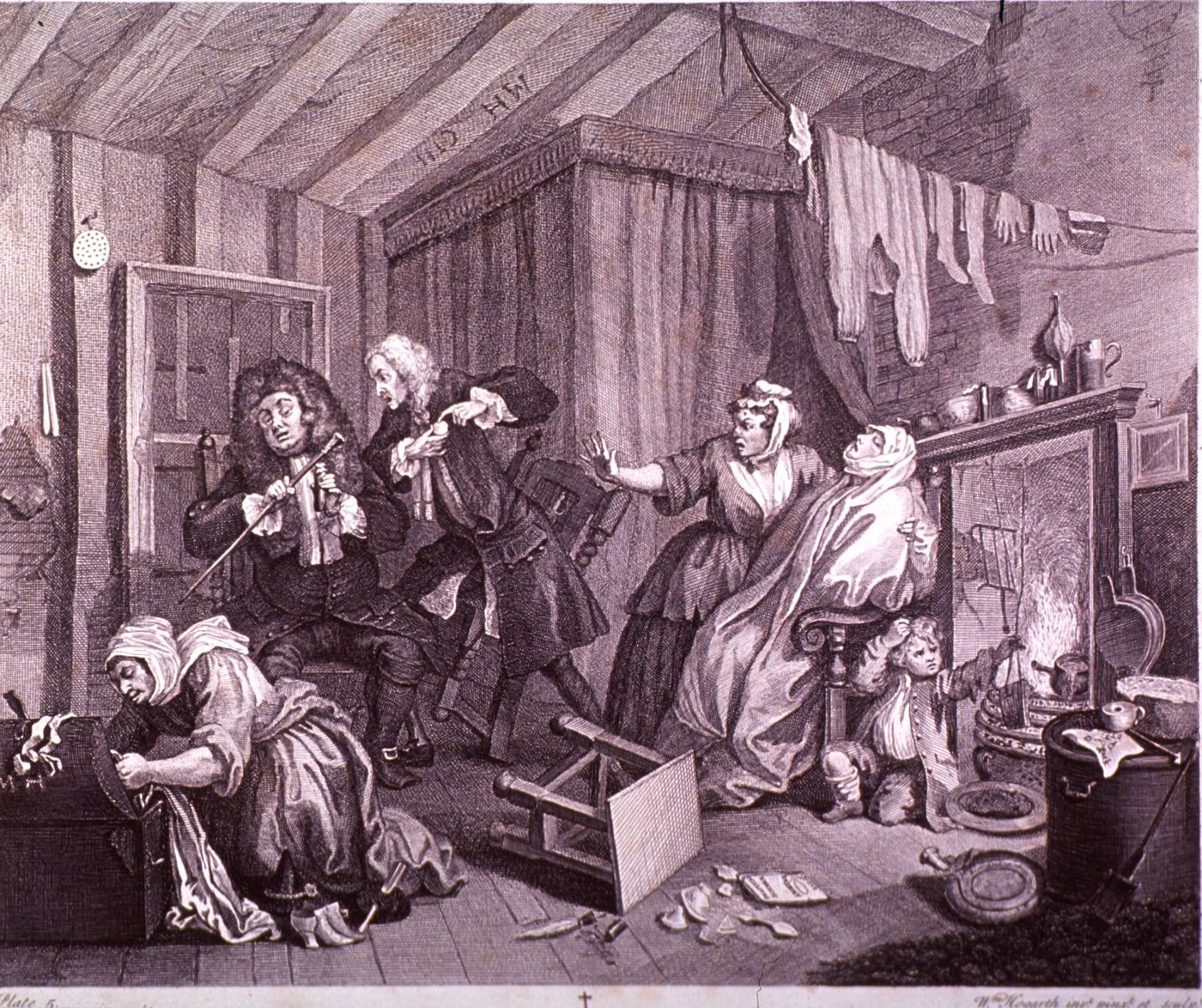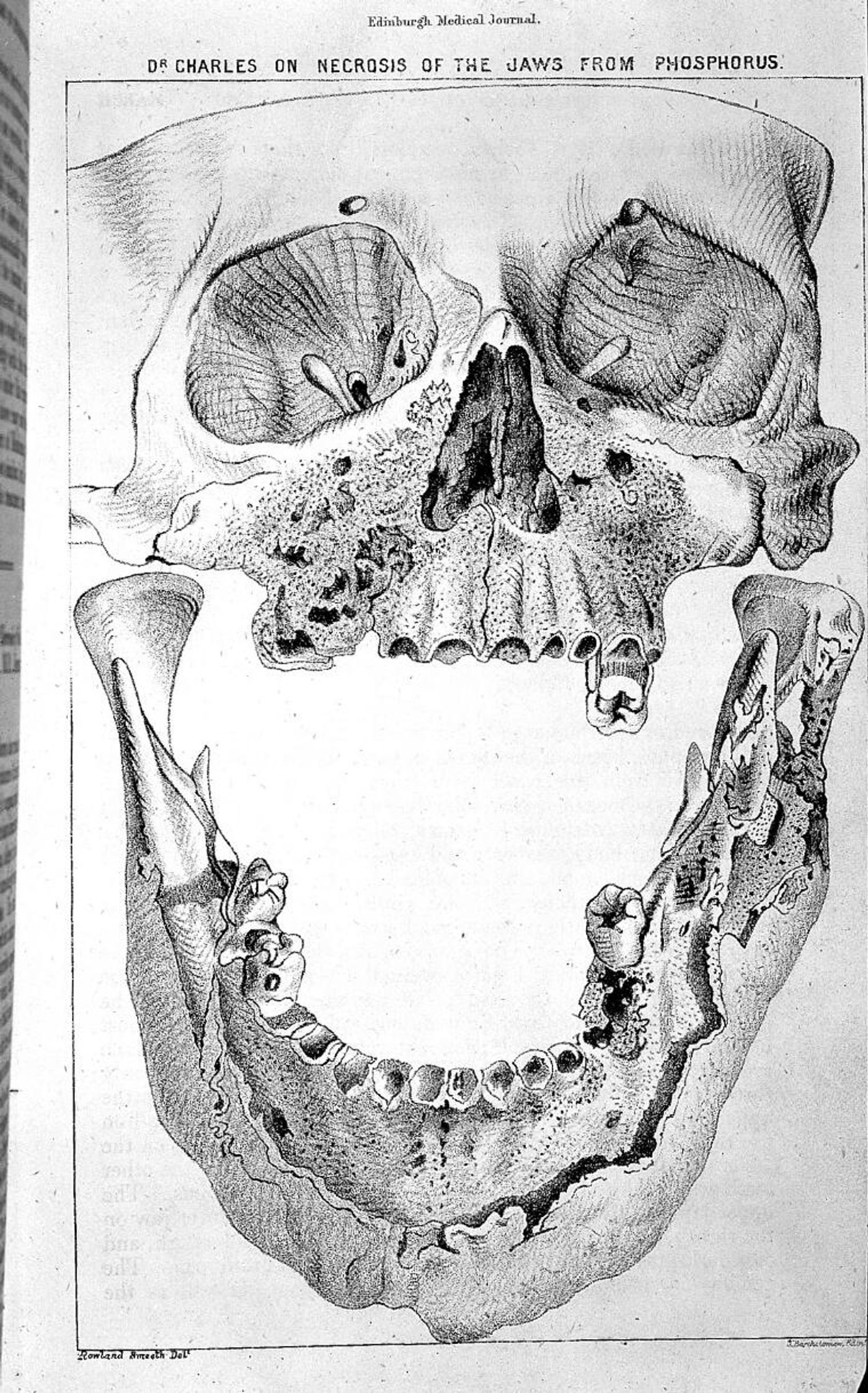Vague Plague: Historically Prevalent Diseases in Popular Culture

Disclaimer: While this article does not contain photographs of human remains, it does contain drawings of skeletal remains and videos outlining disease processes.
Both series take place during the 19th century before the invention, and widespread use of antibiotics (very relevant to one example), and both feature diseases that could have (and did) result in facial disfiguration. Again, it’s that shock factor.
First up, Enola Holmes and the case of kind of -sort of- alluding to Phossy Jaw.
As the title of this article suggests, media doesn’t always let you know what the disease is that you’re viewing. They often remain vague and dramatically refer to a “plague” or “scourge” that’s making its way through the plot…. or geographic area. In our first example, the second installment of the popular Netflix movie series Enola Holmes, the main character infiltrates a matchstick factory to find clues regarding a missing person. A plot point is that many people (primarily women) are falling ill and dying from an outbreak of typhus, AKA typhus fever. Some workers are even turned away at the door after showing symptoms of this (also terrible) disease. Upon further investigation within the story, these women are dying from, and being turned away for showing signs of, osteomyelitis due to industrial exposure to phosphorous, AKA Phossy Jaw. While the term is never used in the movie, the idea that people are sick and dying due to work conditions is a main plot point.
Besides modern medical exposure to bisphosphate (used to treat some cancers and osteoporosis), Phossy Jaw is a skeletal pathology specifically associated with 19th-century matchstick manufacturing. The disease was first reported in Vienna in the 1830s and was soon recognized throughout industrialized Europe. By the 1860s, Phossy Jaw was specifically associated with individuals working in matchstick factories.
“Strike Anywhere” matches were an important 19th-century invention, the creation of which required yellow phosphorous. Harsh factory conditions with limited ventilation guaranteed daily exposure to this chemical for workers that were primarily women and children.
About 11% of those exposed to this type of phosphorus developed Phossy Jaw after about five years of exposure. Individuals with pre-existing dental diseases were more likely to develop Phossy Jaw, and children seemed to be more susceptible.
The primary feature of Phossy Jaw is the formation of a sequestrum, or section of dead necrotic bone, in the mandible. This necrotic bone would have had to be surgically removed to survive; however, Phossy Jaw often lead to septicemia, meningitis, and death.
To make matters worse, despite a known association between yellow phosphorous and Phossy Jaw, as well as the 1888 London Matchgirls Strike, it continued to be used in manufacturing until 1910.
A paleopathological analysis of an individual from 19th century England described the impact of the disease on physical appearance, “not only would this person have appeared facially disfigured, with swelling and suppurations of the affected side of the face, the foul discharge from their mouth as a result of osteomyelitis would have been odorous, thus potentially resulting in social stigma.”
While the second Enola Holmes film doesn’t delve into the facts of the disease, it does illustrate some of the poor working conditions of factories at the time. To its credit, the film does not feature a graphic depiction of the disease for shock value; then again, the film is PG-13 and family-oriented. The only individual assumed to be suffering from Phossy Jaw is shown with a swollen face/cheek. Other media geared toward an older audience have used visual effects to depict more advanced stages of the disease in the past.
Next, we have a historically famous, and very much still around, disease that everyone in 15th-century Europe liked to blame on each other: syphilis.
Caused by the bacterium Treponema Pallidum, and in the past alternatively called the ‘French Disease,’ the ‘Neapolitan Disease,’ the ‘Spanish Disease,’ the ‘German disease,’ the ‘Polish disease,’ ‘great pox,’ or some iteration of all of these, the spread of venereal syphilis in Europe began in the late-15th century.
Maybe I watch too many historical dramas, but syphilis does pop up frequently in everything from Renaissance-period Machiavellian intrigues to wild west adventures like The English. To its credit, the recent Amazon series does dive into the social stigma surrounding those afflicted with the facial disfigurations associated with later stages of the disease; however, it also occasionally falls into the shock-value trope. The series shows the disease at several stages and in more than one form. Here we will discuss some of the facts about syphilis in the 19th century and maybe try to understand why we keep returning to it in modern media.
Before the invention and widespread use of antibiotics, venereal syphilis was a long-term disease that could seemingly vanish before reappearing to cause severe physical and neurological symptoms in later stages. While the disease is still around today, antibiotics have made treatment relatively easy (although terrifying antibiotic-resistant strains exist). Still, many remain unaware of the damage that this infectious disease can cause when left untreated. Additionally, if a pregnant person is left untreated, they can pass the disease to their unborn child, who can be born with the congenital form of syphilis, also depicted in The English.
The social stigma associated with syphilis, particularly in the later stage, is a theme explored throughout The English. Multiple characters are introduced suffering from the tertiary stage of the disease with facial disfiguration, with one literally being used as a sideshow attraction. The stages of infection are discussed in the above video. However, it’s important to note that only 15-40% of infected individuals experience the symptomatic tertiary (late stage) of the disease that can begin decades after initial infection, and only 10-20% of tertiary cases will have lesions that impact the skeleton.
“Tertiary infection includes cardiovascular involvement, such as aortic aneurysms, and neurosyphilis, which can include “lightning pains,” dementia, tremors, and movement and balance disorders. Tertiary disease can also feature gummatous involvement, the development of gummy, destructive tumors with a necrotic center, which can affect any tissue or organ system. Gummata can reduce motor and joint function, cause debilitating pain, and result in disfiguring lesions, particularly on the face and cranial vault.” – Molly Zuckerman, author of The “Poxed” and the “Pure”: A Bioarchaeological Investigation of Community and Marginalization Relative to Infection with Acquired Syphilis in Post-Medieval London.
Today, stigma still plays a role in how and when people seek treatment for this and other sexually transmitted diseases. In the past, when no treatment was available, “many of the highly distinctive symptoms of syphilis, such as the patchy baldness (alopecia) of secondary stage syphilis and the destruction and collapse of the nose and hard palate in tertiary stage disease, became highly symbolic of sin and moral corruption.”
While Phossy Jaw doesn’t occur outside of specific conditions now, syphilis is very much still around. According to the CDC, rates of syphilis infection in the primary and secondary stages have increased almost every year since 2011 in the US. From 2019-2020 the rate of infection increased by 6.8% nationwide.
I’m sure these and more historic diseases will continue to pop up in media as time goes on, and this is by no means an exhaustive discussion. A large body of research exists that explores the social, political, and even economic causes and effects of disease in the past and the stigma associated with specific conditions. We can only hope that future representations are done respectfully and accurately, but you never really know. To learn more about these diseases, please explore the sources listed below and remember to be careful when looking up certain keywords on Google Image search.
Sources: International Journal of Paleopathology, Antimicrobial agents and chemotherapy, JMVH, International Journal of Osteoarchaeology, International Journal of Osteoarchaeology 2, The National Archives, Britannica, The Journal of Medicine and Life, Social Science & Medicine, Archeological Papers of the American Anthropological Association, CDC









